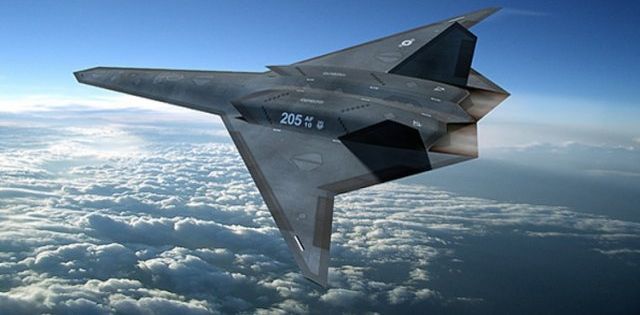The Wall street Journal 24/7 suggest the Boeing company maybe
putting itself at a disadvantage for obtaining an procurement award for the US
Air Force's new bomber proposal. First any clean sheet offering cannot be tied
to a fix cost project performance such as the KC-46 Pegasus tanker has gone
through with Boeing. It would be foolish to think having the first time fixed
cost project problems would naturally roll into a clean sheet approach, because
of a company's performance from doing business within its first time attempt of
using an existing commercial aircraft frame converted into a military
application at a fixed cost.
Boeing should not be penalized on its first time attempt for its
KC-46 tanker when considering a bomber bid. Procurement should not use it as an
example what the military can expect from Boeing for its clean sheet designs.
The military has not been especially kind to Boeing when it cancelled Boeing's
offering, during the F-35 competition where the Military went with its current troubled
model, which is just now reaching entry into military service from Lockheed.
Not only has Boeing delivered 737 types for Navy AWACS missions without any
controversy, it has made good with the KC-46 in getting it where it is today,
while spending its own coin.
WS 24/7:"And while this is all going on, the Pentagon is expected to decide, perhaps as soon as next month, on the winner of a contract to build the Long Range Strike Bomber (LRS-B), often called the B-3. Boeing and partner Lockheed Martin Corp. (NYSE: LMT) are teamed against a competing bid from Northrop Grumman Corp. (NYSE: NOC).
The B-3 procurement is expected to fall in a range of 80 to 100 planes at about $500 million per plane, and the contract is the last of three new airplane deals the Pentagon has included in its budget plans. The Joint Strike Fighter, or F-35, was awarded to Lockheed in 2001, and planes are being delivered in small quantities for testing and evaluation now. The KC-46A contract is valued at around $50 billion for 179 planes, not including long-term maintenance and parts deals."

Boeing Photo For B-3 21 Bid Via WS 24/7
The error pentagon
thinkers made on the F-35 project is making an aircraft compliant for all three
aviation services. The F-35 should have been a fighter for both the Navy
and Air Force and not a jump jet for the Marines. The bid should have been
divided in a modified approach. The deck aircraft and land based fighter could
have been designed without sacrificing advances for dog fighting, range and
speed. The Marine copy should have been awarded to Boeing as a stand-alone as an
advanced Marine VTOL fighter. Both would have been long deployed and have its
optimizations going beyond any adversaries currently flying in the
air. However, the all for one and one for all approach reached a common
denominator of reduced speed and aerial abilities. The F-16 has shown its chops
against the F-35 as having an edge under several conditions. Not an acceptable
outcome.

Northrup Photo For B-3 21 Bid Via WS 24/7
The Boeing
Marine F-32 would have been brilliant aircraft with top speeds of up to 1,200
nm/hr. The same speed all three types now must live with in the one-for-all
concept. The Navy and Air Force now must match against other aircraft through
superior dynamics by using its advanced systems and stealth. However, at some
point those advantages will become overcome by adversarial developments.
The military achieved a "War Fighter Nullification" when reaching a common denominator consistent to each of its A-B-C mission scopes for its fifth generation War Fighter types. Short stubby wings, a heavy enough frame for carrier reinforced carrier landings, and a size enhancing body for receiving VTOL applications, has taken the F-35 for having a smaller edge over other fourth Gen fighters.
This brings us to the KC-46 project where the Air Force short cuts the concept using the 767 frame, and then Boeing made mistakes in configuring systems within the frame for tanker duty. Those mistakes have been solved, and does not reflect on Boeing's ability to complete the task. My own belief is the military will award the next bomber to Northrup, as it has kept both Lockheed and Boeing going with prior awards, and it does not want to loose an industrial complex due to starving it from winning procurement awards.
That consideration does not always bring the military the best concept forward. However they encourage the winner to enlist "others" as subcontractors for the project once the award is made. I have no idea what the big three have for proposals for this military bomber, called the B-
What interest me is Boeing's capability for plastic wings and body. The stealth factor is crucial, if considering a 500 million dollar, it becomes a war time target for any adversary.
The bomber must be safe, so it never will crash while under operation of its crew. It must not be lost on a mission. Its a capital aircraft worth its weight in Gold.
Therefore, this bid award is one of the most careful considerations of this century. The military Industrial Complex cannot let this nation down on delivering this purchase. There are no financial do-overs for the project, and it must work according to its proposed procurement promise. I am confident no matter who gets the award, this bomber will be made to protect this nation without any significant problems.
No comments:
Post a Comment